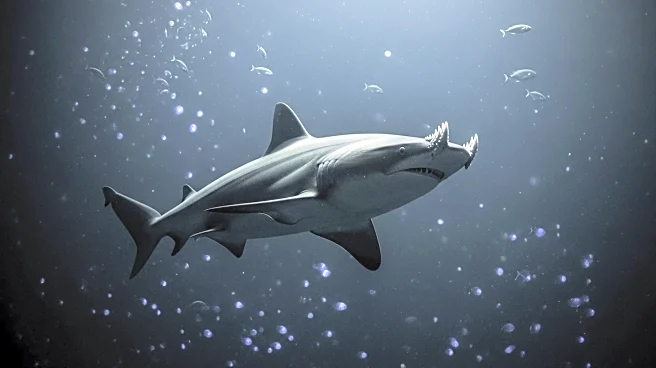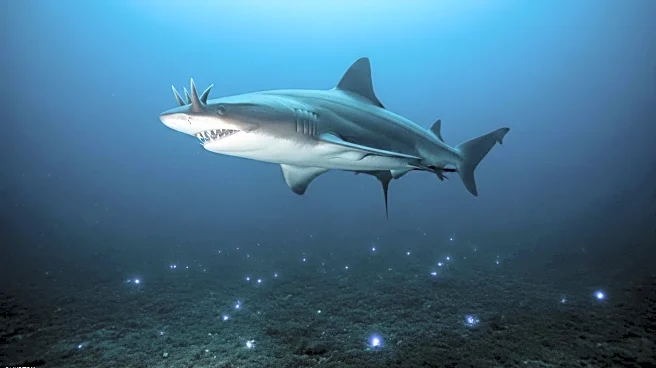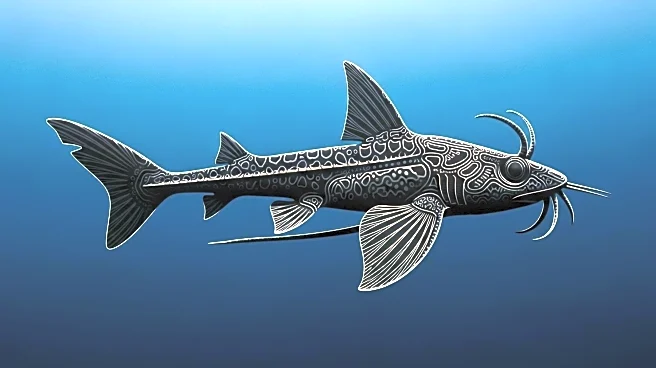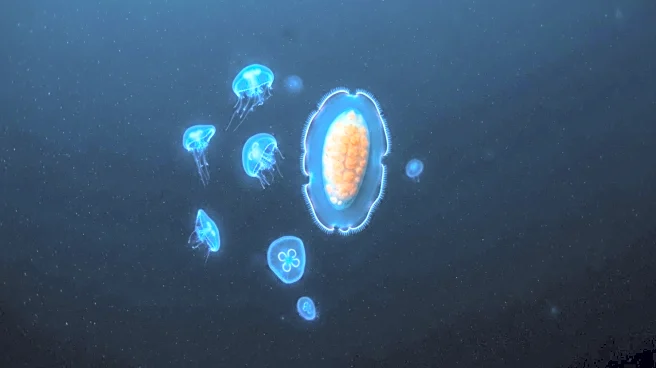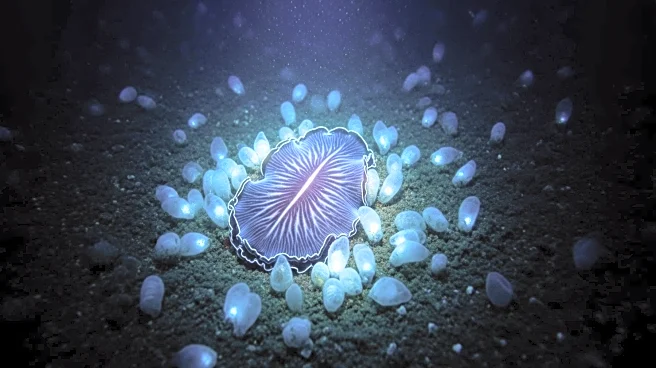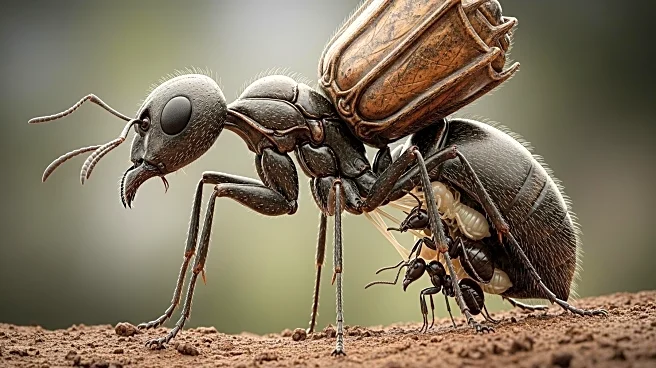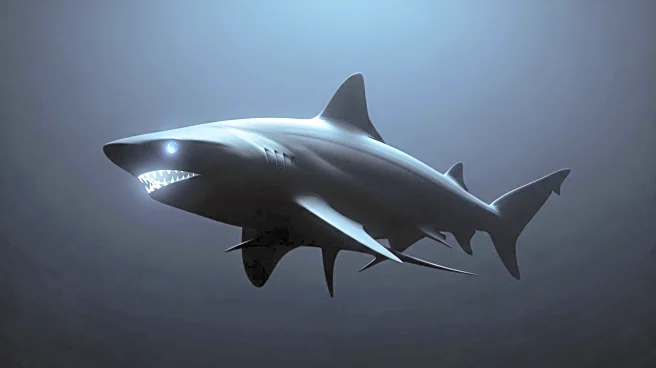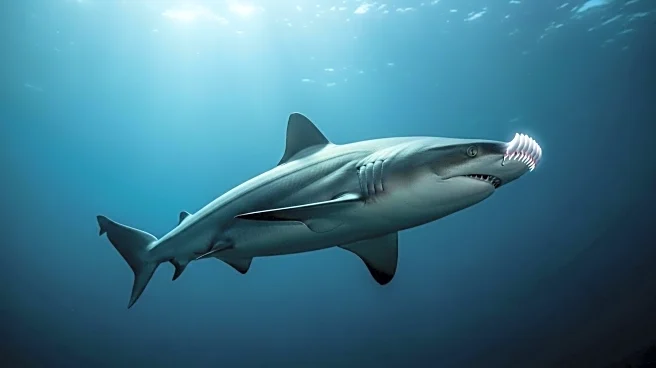What's Happening?
Recent research has uncovered a unique evolutionary trait in male ghost sharks, also known as chimaeras, which are deep-sea fish related to sharks and rays. These creatures possess a rod-like appendage on their foreheads, equipped with retractable teeth, used primarily for mating purposes. The study, conducted by scientists from the University of Florida, University of Washington, and University of Chicago, found that these forehead teeth are true teeth, similar to those found in the mouth. Genetic testing confirmed that the teeth on the tenaculum express the same genes as oral teeth, distinguishing them from the tooth-like scales on shark skin. The research, published in the Proceedings of the National Academy of Sciences, highlights the evolutionary flexibility of these species, repurposing existing structures for new functions.
Why It's Important?
This discovery sheds light on the evolutionary processes that allow species to adapt and develop new traits for survival and reproduction. Understanding the genetic and developmental mechanisms behind such adaptations can provide insights into the broader field of evolutionary biology. The ability of ghost sharks to grow teeth outside their mouths challenges existing notions of tooth development and could lead to further studies on the genetic pathways involved. This research also emphasizes the importance of exploring deep-sea environments, which continue to reveal surprising biological phenomena that can inform scientific knowledge and conservation efforts.
What's Next?
The study opens avenues for further research into the genetic and developmental processes that enable such unique adaptations. Scientists may investigate other species to see if similar evolutionary traits exist, potentially leading to new discoveries in marine biology. Additionally, the findings could inspire technological innovations in biomimicry, where biological systems are emulated in engineering and design. The research community may also focus on the ecological roles of ghost sharks and their interactions within deep-sea ecosystems, contributing to conservation strategies for these enigmatic creatures.
Beyond the Headlines
The study of ghost sharks' forehead teeth highlights the concept of 'evolutionary tinkering,' where existing biological structures are modified for new purposes. This phenomenon underscores the dynamic nature of evolution, where organisms continuously adapt to their environments in unexpected ways. The research also raises questions about the ethical implications of studying and potentially exploiting deep-sea species, emphasizing the need for responsible scientific exploration and conservation efforts.
